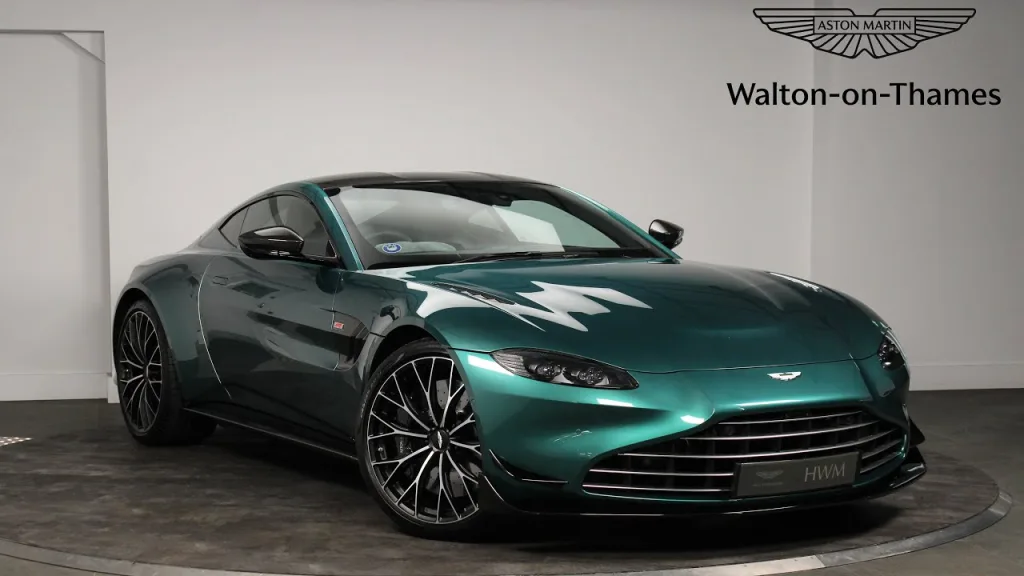Introduction: More Than a Color
When people think of Aston Martin, they often picture sweeping lines, muscular grace, and the intoxicating roar of a V12 engine. But just as iconic as its silhouettes and sound is a particular color—an unmistakable, almost mythical shade known simply as “Aston Martin Green.” For decades, this verdant hue has adorned some of the most beautiful and successful cars on the planet, symbolizing not just performance, but pride and tradition. Yet in recent years, “green” has taken on another meaning for the British marque—a commitment to environmental sustainability and corporate responsibility. Buffstreams
In this article, we explore the dual meaning of Aston Martin Green: the legendary racing color rooted in British motorsport history, and the company’s bold step into the future through its Racing. Green. Sustainability strategy. From heritage to hydrogen, paint to policy, this is the story of how a luxury carmaker turns a color into a philosophy. CricHD
The Legacy of Racing Green
A National Identity on Four Wheels
The origins of “British Racing Green” date back to the early 20th century. When the Gordon Bennett Cup races began requiring competitors to paint their cars in their country’s national color, Britain chose green, partially to honor its races held in Ireland. What started as a pragmatic decision soon became an aesthetic tradition, with Bentley, Jaguar, and Aston Martin all making green synonymous with British automotive pride.
Aston Martin’s love affair with green dates to its earliest racing days. In 1922, two green-painted Aston Martin cars were entered in the French Grand Prix. By the 1950s, the DB3 and DBR1 had cemented the color in global consciousness. Notably, the DBR 1, driven by Carroll Shelby and Roy Salvado, won the 1959 24 Hours of Le Mans, bathed in a distinctive deep green hue that would inspire generations of race cars and road cars alike. crichd.in
Evolving the Shade
Over the decades, Aston Martin has refined and reimagined its green finishes. From the Olive Green of the DB4 GT Zagato to the rich, dark tone of the Viridian Green Vantage GT12, green has never been a monolith. Special editions, like the DBS Superleggera “On Her Majesty’s Secret Service” in Olive Green, have continued to link the brand’s palette with its cinematic and racing legacies. WellHealth
Marek Reichman, Aston Martin’s Chief Creative Officer, once said, “There is a deep psychology to color in the automotive world. Green represents our roots, but also calm power and quiet confidence.”
Racing Green in the 21st Century

A Formula One Renaissance
After years away from the top tier of motorsport, Aston Martin returned to Formula One in 2021 with a bang—and a brand-new green livery. The AMR21, painted in a modernized British Racing Green, instantly stood out on the grid. It wasn’t just about looks; it was a statement. The green wasn’t nostalgia—it was ambition. It told fans: Aston Martin is back, and we mean business. ballebazzi
The response was electric. Merchandise sales soared. Social media buzzed. The color even became a fashion accessory in paddocks and pop culture. Suddenly, green was cool again—and Aston Martin had redefined its signature hue for a new generation.
Racing to Road
This motorsport momentum spilled over into Aston Martin’s road cars. The 2021 launch of the Vantage F1 Edition featured a unique Racing Green finish that channeled the spirit of its track sibling. Customers responded enthusiastically: green, once a niche color for collectors, experienced a surge in popularity.
By 2023, green had become one of Aston Martin’s most requested colors, accounting for nearly 24% of orders. The brand introduced nine core green options across its range and, through its bespoke ‘Q by Aston Martin’ service, offered more than 30 customized variations. “Customers are falling in love with green again,” Reichman noted. “It’s become our signature of elegance and engineering.”
Crafting the Perfect Green
Creating the perfect shade of green is both art and science. It takes hundreds of pigment trials, paint layer tests, and environmental simulations. The metallic depth of Podium Green or the soft shimmer of Sage Green is the result of a process as meticulous as the car itself.
But it’s not just about appearance. Paints must meet exacting standards for durability, reflectivity, and environmental compliance. Aston Martin’s paintshop, one of the most advanced in the UK, uses robotic application techniques and water-based paints to reduce waste and energy use.
From every angle, the green on an Aston Martin isn’t just color—it’s craftsmanship. Skin Care in Hindi WellHealthOrganic
Racing.Green.A New Kind of Green
Sustainability Strategy Unveiled
In April 2022—symbolically on Earth Day—Aston Martin launched Racing. Green, its corporate sustainability platform. This wasn’t just a branding exercise; it was a comprehensive roadmap toward a net-zero future.
Under the Racing.Green. Banner, Aston Martin pledged to achieve net-zero manufacturing emissions by 2030 and a fully net-zero supply chain by 2039. To achieve this, the company outlined strategic goals across environmental responsibility, social impact, and governance.
Environmental Initiatives
- Renewable Energy: All Aston Martin manufacturing facilities have run on 100% renewable electricity since 2019. The company has invested in solar energy, installing over 14,000 panels across its sites.
- Carbon Reduction: In 2023, Aston Martin reported a 3.9% year-over-year reduction in CO₂ emissions per vehicle manufactured. This was achieved through optimized paint processes, LED lighting, and streamlined logistics.
- Plastic and Waste Management: Single-use plastic in operations is being phased out, and over 99% of waste from core manufacturing is diverted from landfills.
- Carbon Offsets: The company partners with Carbon Impact Partners to offset unavoidable emissions. Projects include wind farms in Turkey generating over 575,000 MWh annually.
Product Innovation
Aston Martin is transitioning its lineup toward electrification. Key milestones include:
- Valhalla Plug-in Hybrid: Deliveries start in 2024.
- First All-Electric Vehicle (BEV): Launch expected in 2025.
- Fully Electrified Portfolio: Target set for 2030.
- End of Pure ICE: Aston Martin aims to phase out internal combustion-only models by 2026.
In tandem, the company is investing in sustainable materials, from green aluminium to vegan leather alternatives.
Social Responsibility & Governance
Racing.Green. It isn’t only environmental. It includes:
- Diversity targets: 25% female leadership by 2025, 30% by 2030.
- Training and apprenticeships for youth in local communities.
- Biodiversity projects are being implemented around factory sites to restore natural habitats.
- Board-level oversight on sustainability efforts.
In short, green is no longer a single department or program—it is embedded in Aston Martin’s DNA.
The Psychology of Green

Why does green resonate so deeply with consumers? Psychologically, green evokes nature, balance, and renewal. In automotive language, it blends tradition with progression. Green says, “I am powerful, but I am mindful.”
In an era of growing climate awareness and shifting consumer values, this association is critical. Customers no longer want just fast or beautiful cars—they want meaningful brands. Aston Martin’s embrace of green, in color and conduct, gives buyers both.
Green as a Brand Identity
The synergy between Aston Martin’s color heritage and its sustainability mission is rare in the luxury world. Many brands struggle to reconcile legacy with innovation. Aston Martin has turned a legacy color into a metaphor for transformation.
In a world flooded with corporate greenwashing, Aston Martin’s Racing.Green. Feels authentic. It aligns seamlessly with their F1 success, technical innovation, and design ethos. The brand doesn’t have to pretend to be green—it has always been.
Challenges on the Road Ahead
Still, challenges remain. Critics argue that luxury manufacturing, by its nature, resists full-scale sustainability. Bespoke vehicles and handcrafted interiors aren’t easily scaled to low-emission models. Moreover, the reliance on carbon offsets rather than full reduction remains a point of debate.
And while Aston Martin’s electrification plans are promising, competitors like Porsche and Ferrari are also racing toward similar goals, often with larger R&D budgets.
To stay ahead, Aston Martin must continuously innovate, ensuring Racing. Green. It is more than marketing—it must deliver real, measurable impact.
Conclusion: Green Means Go
Aston Martin Green is more than just a color on a car—it’s a symbol, a strategy, and a story. From its motorsport origins in the 1920s to its starring role in 21st-century F1, green has always signified elegance, endurance, and excellence. Today, it also signifies responsibility and renewal.
By aligning its historical aesthetic with an ambitious sustainability vision, Aston Martin offers a blueprint for how heritage brands can evolve without compromise. As it accelerates toward an electric future, the company remains rooted in its past, with green as both a nod and a north star.
In every sense of the word, Aston Martin Green is the future—poised, powerful, and profoundly purposeful.


